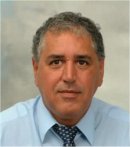|
Plenary
Lecture
Molecular Beam Epitaxy:
From Quantum Wells to Quantum Dots
From Research to Mass Production

Professor Mohamed Henini
School of Physics and Astronomy
University of Nottingham
Nottingham NG7 2RD
England, UK
E-mail:
mohamed.henini@nottingham.ac.uk
Abstract: Research on quantum wells, quantum dots,
and superlattices has rapidly expanded during the past
decade due to their potential applications in novel
devices and their many unique physical properties.
Molecular Beam Epitaxy, a sophisticated technology for
the growth of high quality epitaxial layers of
semiconductor materials, has played an important role in
the study of low dimensional structures and devices (LDSD)
and the development of the semiconductor electronics
industry. The remarkable properties of LDSD make them an
attractive candidate to develop semiconductor-based
applications for exploitation in novel nanoelectronic
and optoelectronic devices.
In this talk I will review the main achievements of
Molecular Beam Epitaxy in fundamental research and
manufacturing, provide an insight in the growth and
properties of self-assembled quantum dots, and report on
some new developments in novel material systems.
Brief Biography of the Speaker:
Mohamed Henini obtained his first degree at the
University of Oran, Algeria. This was followed by a
period of work as a Production Engineer for an
electronic company (SONELEC) in Sidi Bel Abbes, Algeria
. He came to Nottingham University and was awarded the
PhD degree for research in Deep Level Transient
Spectroscopy (DLTS) in 1984. He remained in the
Electrical and Electronic Engineering Department as a
Research Fellow in the area of Transmission Line
Modelling (TLM). In September 1986 he transferred to the
Physics Department where he is now Professor of Applied
Physics. He has over 20 years of experience in Molecular
Beam Epitaxy (MBE) growth. His particular speciality is
the physics and technology of MBE growth for III-V
electronic and optoelectronic devices. Over the years,
he has made contributions to various aspects of III-V
materials and devices for photonic and high speed
electronic applications. He has been acknowledged as
responsible for several "world firsts" in MBE growth.
During the last few years he has achieved a further
significant breakthrough producing new state-of-the-art
materials containing quantum dots (QDs). He Ranked 1st
(UK) and 14th (internationally) out of Top 25 Authors on
QDs for the period 1992-2002 (ISI Essential Science
Indicators; http://www.esi-topics.com/). He has authored
and co-authored over 750 papers in international
journals and conference proceedings. He is the founder
of two international conferences namely, Low Dimensional
Structures and Devices (LDSD) and Epitaxial
Semiconductors on Patterned Substrates and Novel Index
Surfaces (ESPS-NIS). He edited four books which were
published by Elsevier and serves on the Editorial Board
of several scientific journals.
|
